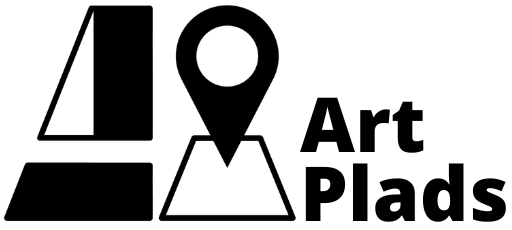The Meaning and Cultural Significance of Tibetan Prayer Flags
Share
Tibetan prayer flags are more than just colorful decorations fluttering in the wind—they carry deep spiritual significance and cultural history. These sacred flags, known as Lungta (རླུང་རྟ་) in Tibetan, have been an integral part of Tibetan Buddhism for centuries, symbolizing peace, wisdom, and harmony. Whether you’ve seen them in Nepal, Tibet, or even in Western gardens, understanding their meaning enhances appreciation for their sacred purpose.
What Are Tibetan Prayer Flags?
Tibetan prayer flags are rectangular or square pieces of fabric inscribed with sacred mantras, prayers, and symbols, traditionally hung in high places where the wind can spread their blessings far and wide. These flags are commonly seen:
- Strung along mountain passes and monasteries in Tibet and Nepal
- Draped over rooftops and temple grounds
- Hanging from trees, bridges, and sacred sites
Unlike national flags that represent a particular country or political allegiance, Tibetan prayer flags are spiritual tools meant to promote well-being and positivity for all beings.
The Meaning Behind Tibetan Prayer Flags
Each prayer flag carries a powerful message, deeply rooted in Buddhist teachings. The colors, symbols, and mantras inscribed on the flags all serve a specific spiritual purpose.
The Five Colors and Their Symbolism
Tibetan prayer flags always appear in a specific set of five colors, each representing an element and a spiritual value:
- Blue – Sky (Symbolizes wisdom, vastness, and open space)
- White – Air/Wind (Represents purity and compassion)
- Red – Fire (Symbolizes energy and transformation)
- Green – Water (Associated with balance and harmony)
- Yellow – Earth (Represents stability and grounding)
Together, these colors reflect the natural balance of the universe, and when arranged in their traditional order, they promote harmony between nature, life, and spirituality.
Sacred Symbols and Mantras
Each prayer flag is adorned with powerful symbols, deities, and mantras, which are believed to invoke blessings and protection. The most commonly featured elements include:
- The Wind Horse (Lungta) – The central symbol on many flags, the Lungta represents good fortune, strength, and success. It is often depicted carrying the Wish-Fulfilling Jewel, symbolizing prosperity and enlightenment.
- Mantras and Prayers – Flags often feature Buddhist prayers and mantras, such as "Om Mani Padme Hum," the mantra of compassion associated with Avalokiteshvara (Chenrezig), the Bodhisattva of Compassion.
- Buddhist Deities – Some flags depict Guru Rinpoche, Buddha, or Green Tara, who offer protection and guidance to all beings.
Why Are Tibetan Prayer Flags Hung in the Wind?
One of the most distinctive aspects of Tibetan prayer flags is that they are not meant to be still. Instead, they are placed in areas where the wind can carry their blessings to all beings.
According to Tibetan Buddhist belief, as the wind passes through the flags, it:
✅ Spreads positive energy and blessings into the world
✅ Purifies the surrounding environment and the minds of those who see them
✅ Brings luck and prosperity to those who hang them with good intentions
This practice aligns with the concept of merit accumulation in Buddhism, where good deeds and prayers generate positive karma.
The Right Way to Hang Tibetan Prayer Flags
Tibetan prayer flags should always be treated with reverence and respect, as they are considered sacred objects. Here’s how to properly display them:
Best Practices for Hanging Prayer Flags
✔ Choose high places – Hang them on mountaintops, rooftops, trees, or between poles so the wind can carry their blessings far.
✔ Follow the right order – Arrange them in the traditional color sequence: blue, white, red, green, yellow from left to right.
✔ Hang them on auspicious days – The best days to hang new prayer flags are during Tibetan New Year (Losar) or other Buddhist festivals.
✔ Replace old flags respectfully – When prayer flags become faded or worn, it is customary to burn them rather than throwing them away, as fire is considered a means of purification.
🚫 Avoid placing them on the ground or using them for decorative purposes without understanding their meaning.
Where to Buy Authentic Handmade Tibetan Prayer Flags
If you are looking to buy Tibetan prayer flags, it is important to support ethical, handmade, and traditional sources. Many prayer flags available online are mass-produced, losing their spiritual integrity.
At ArtPlads.com, we offer authentic handmade Tibetan prayer flags, crafted in Nepal by local artisans. Each flag is made using traditional methods, ensuring its spiritual and cultural authenticity. By purchasing handmade prayer flags, you not only bring blessings into your space but also support Nepalese artisans and their craftsmanship.
Shop handmade Tibetan Prayer Flags Now
Final Thoughts
Tibetan prayer flags are powerful spiritual tools that transcend religious and cultural boundaries. Whether you hang them for peace, protection, or personal reflection, their significance remains deeply rooted in the principles of compassion, wisdom, and harmony.
As you display these sacred flags, remember their true purpose: to spread positive energy, prayers, and blessings to all beings. 🙏
Do you have Tibetan prayer flags at home? Share your experiences in the comments below!
